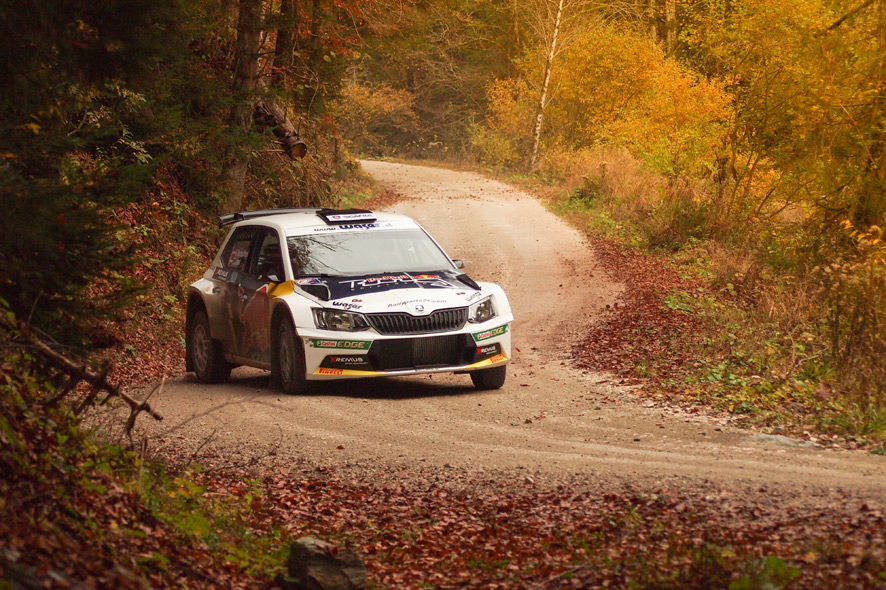If you have a 3D-capable display at home, please click here to watch the 3D version of the video.
Aigen im Ennstal, late October, 9 AM. The sun is shining through the dense woods that have only a few days left until the stunning fall foliage bids farewell to this alpine valley for another year. On the shoulder of a private road on the outskirts of this Styrian village, the BRR Rallye Team is already set up and has brought its shiny new ŠKODA Fabia R5 into position.
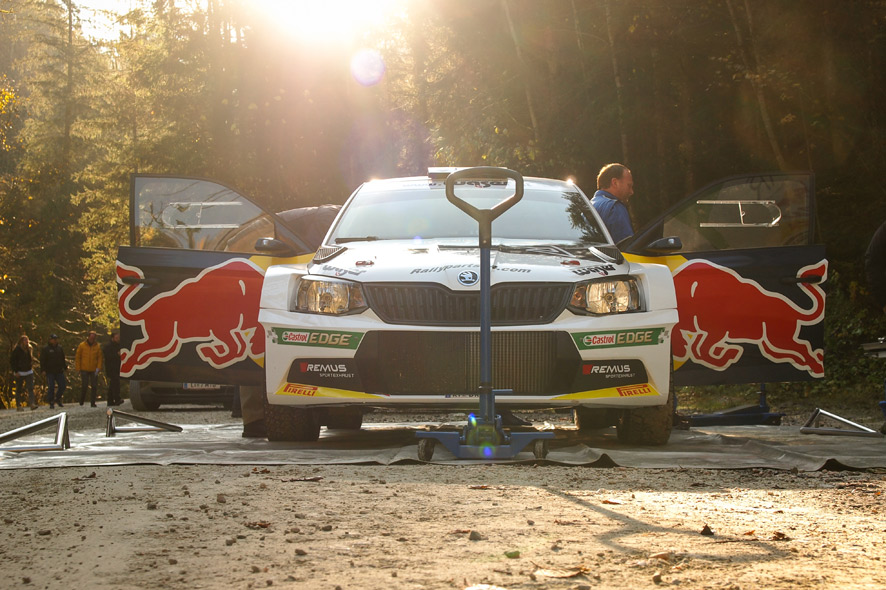
Credit: Ars Electronica / Martin Hieslmair
And the Baumschlager Rallye & Racing (BRR) crew members aren’t the only ones assembled here. Reps from Salzburg-based inspiria event service are on hand, and Ars Electronica Futurelab staffers have also made their way from Linz to the banks of this idyllic mountain stream. Their joint mission: produce a breathtaking action video for ŠKODA.
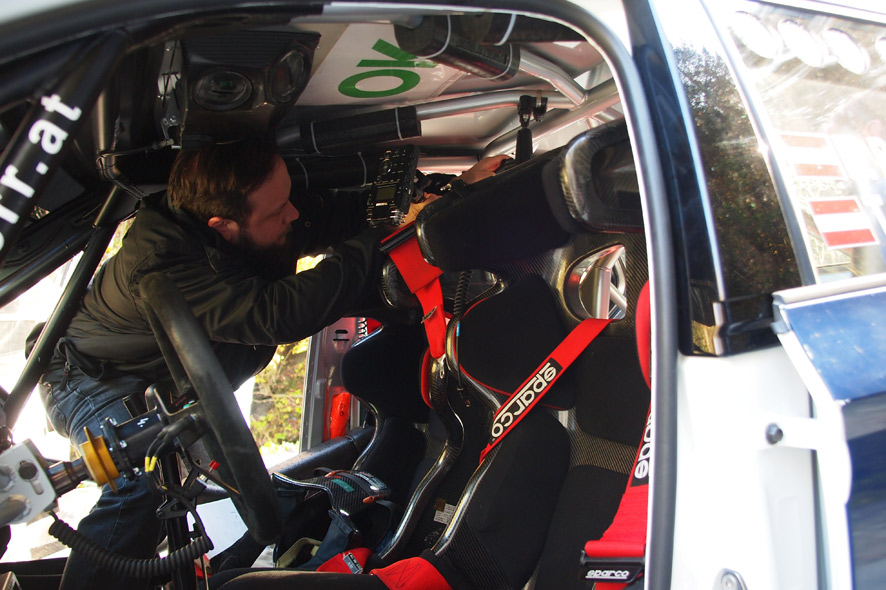
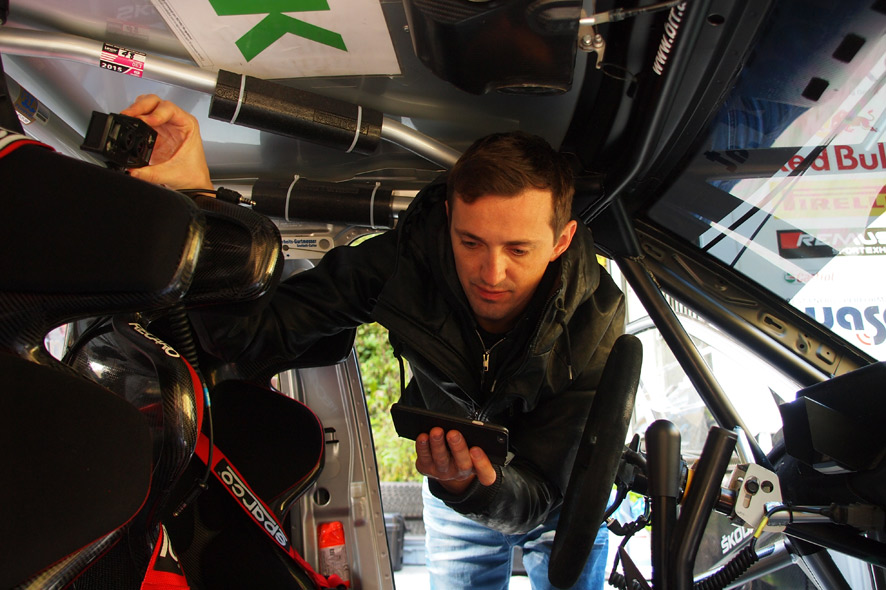
Credit: Ars Electronica / Martin Hieslmair
The route was already pre-inspected by the guys from the Futurelab. Today’s shooting schedule calls for video and audio recordings from the perspective of the rallye driver. But this is still terra incognita to some extent for Andreas Jalsovec and Michael Mayr, who custom-designed the special housings for the two cameras required for these shots and then fabricated them using the 3-D printer in the Ars Electronica Center‘s FabLab. Capturing the noise in this muscle car’s interior is also an integral part of the assignment.

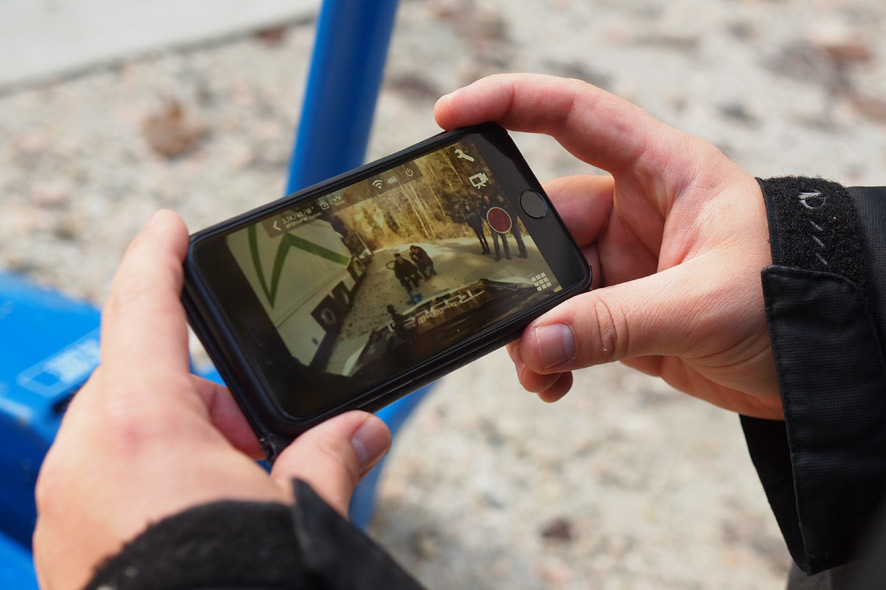
Credit: Ars Electronica / Martin Hieslmair
The high-tech devices behind the 3-D video are pairs of GoPro HERO4 recording the high-speed happenings at a rate of 60 images/second. The postproduction will be done by editing software that can produce an H.265 video suitable for screening in Deep Space 8K. Thanks to the camera’s WLAN feature, every angle for every shot can be set wirelessly via smartphone.

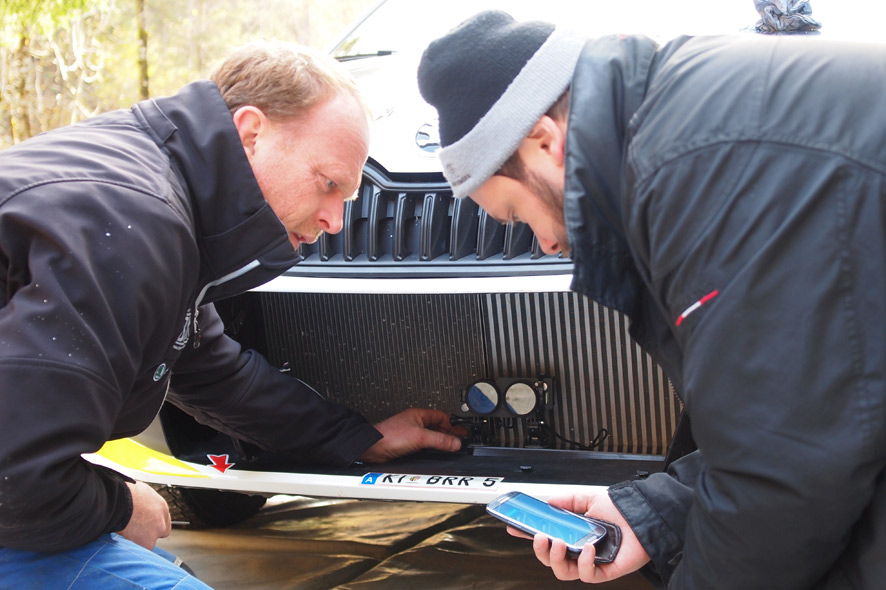
Credit: Ars Electronica / Martin Hieslmair
The day’s agenda includes several runs, with the position of the cameras modified for each take. The cameras are affixed with suction cups to the auto’s interior to capture the driver’s point of view as well as to the roof and underside of the car’s chassis a few centimeters above the ground. Andreas Jalsovec of the Ars Electronica Futurelab: “The big challenge on this day was to change all the camera settings in as short a time as possible.”
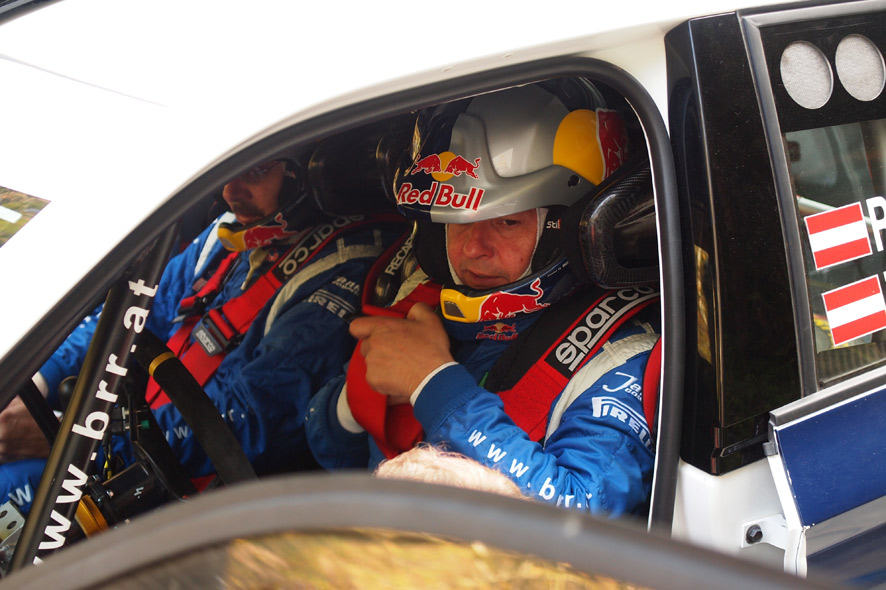

Credit: Ars Electronica / Martin Hieslmair
Today’s driver is Raimund Baumschlager, a multiple Austrian national rallye champion. He and his copilot, Thomas Zeltner, are doing their prerace preparations before the first run. The road is temporarily closed, and the line producer’s walkie-talkie announces the all-clear from the other end of the route. The cameras are rolling, the pedal hits the metal, gravel goes flying and Baumschlager accelerates towards 150 km/h.
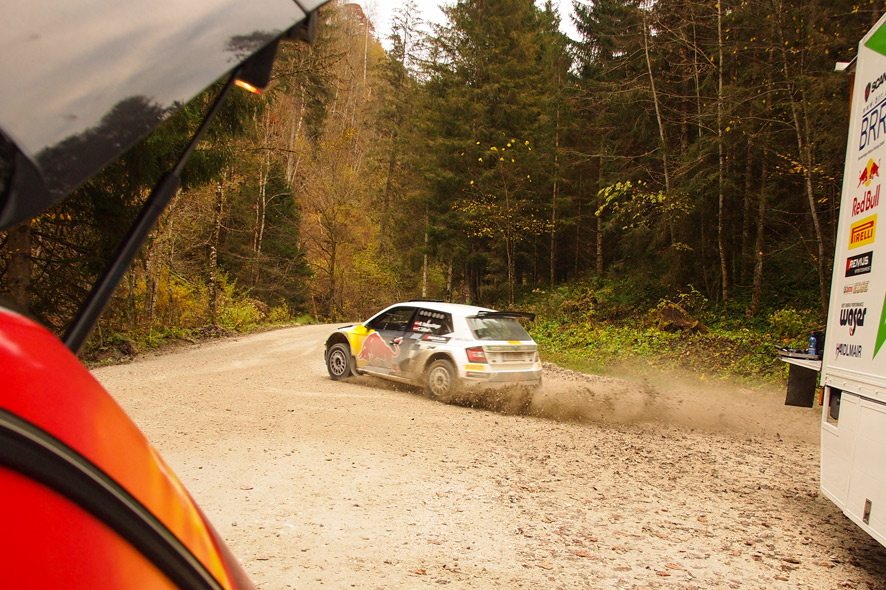

Credit: Ars Electronica / Martin Hieslmair
After a few circuits, Baumschlager parks his ŠKODA next to the service van so the Futurelab crew can do some quick cameras adjustments. During his pitstop, the 56-year-old speed demon had a few moments to reminisce about his 30+-year rallye career and the evolution of motorsport technology that accompanied it. “Back in the old days, everything was so simple,” Baumschlager recalled. “You took a regular production car and you screwed in the so-called ‘cage,’ then the bucket seats were built in along with the 6-point harnesses. And then you strapped on a helmet. [Laughs] But, I have to say, the safety precautions back then were a joke compared to what we have today.”


Credit: Ars Electronica / Martin Hieslmair
There’s a short break in the action. The focus is on shots from new angles and driving techniques to make this 3-D film an even more thrill-packed joyride. The initial results can already be viewed by all those present on the set, and everybody is visibly impressed by the raw footage. But now the watchwords are: We can still get more out of this!
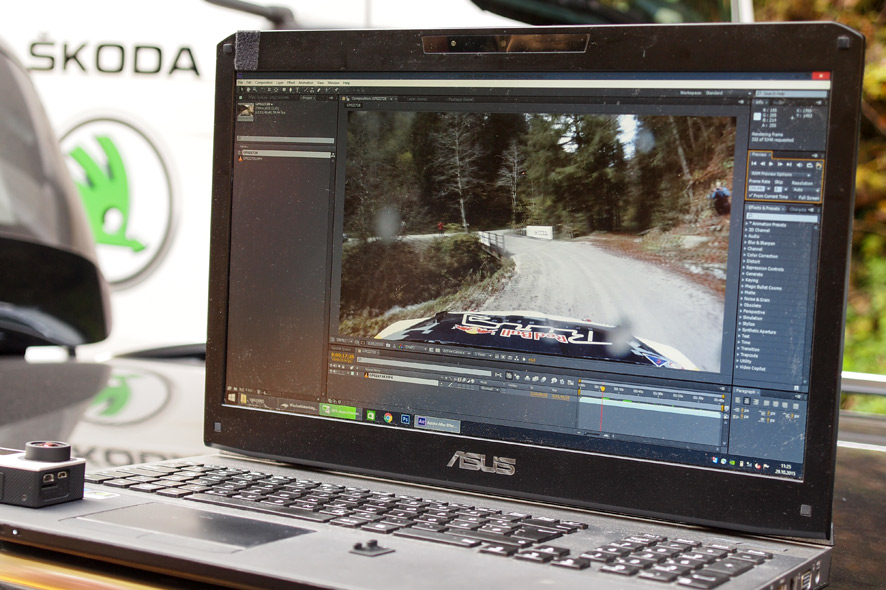
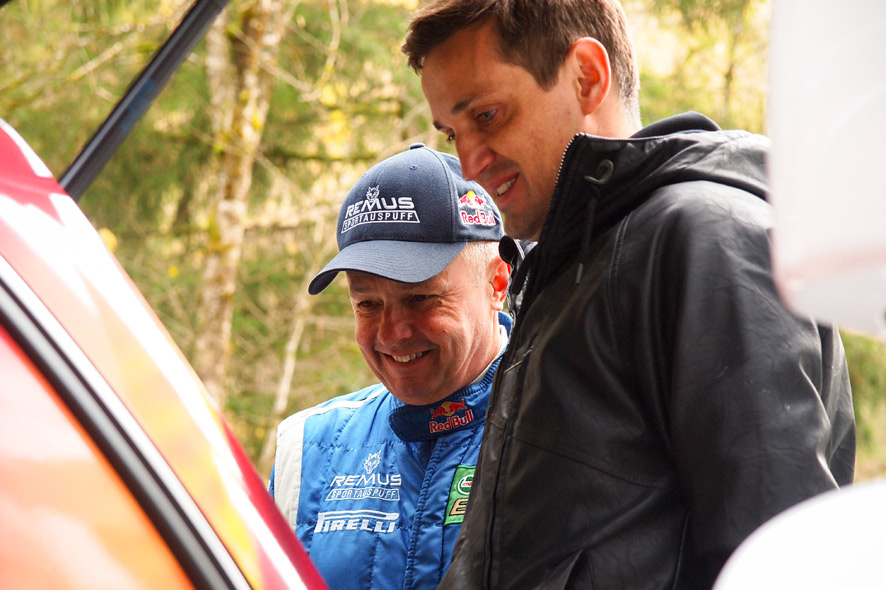
Credit: Ars Electronica / Martin Hieslmair
“Back in the old days, they just used conventional steel tubing for the roll cage,” Baumschlager said, continuing his account. “And before that, there was just a roll bar. In today’s cars, they build in a whole security cell and it’s installed practically all around the chassis. And now, when a rallye driver has an accident, the entire part of the car that’s damaged is junked. That’s a far cry from how it used to be—they did repairs and welded it together again.”
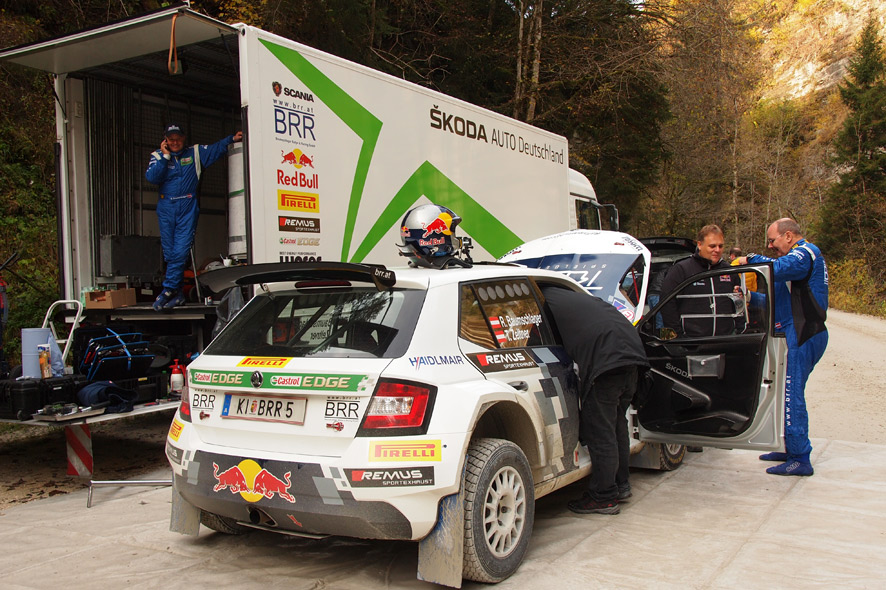
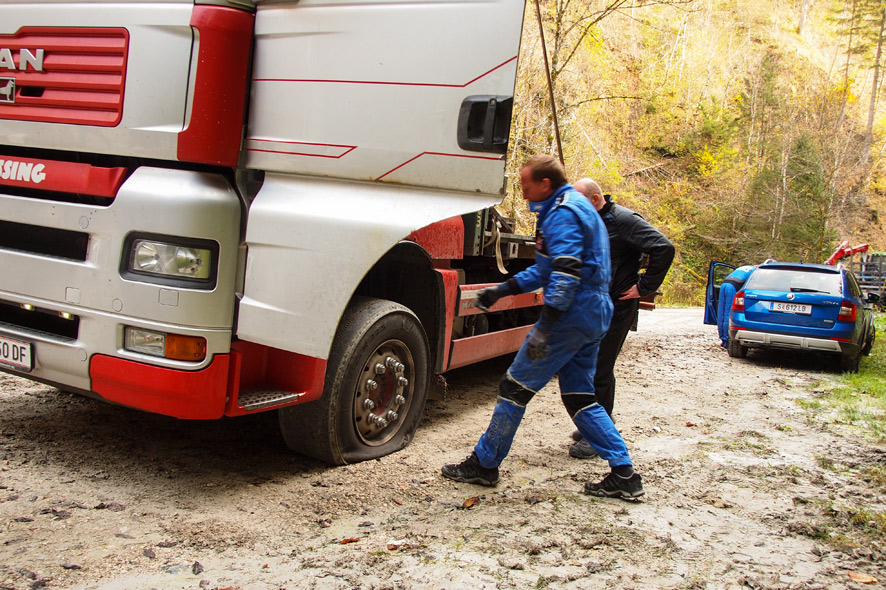
Credit: Ars Electronica / Martin Hieslmair
The road’s been reopened and a truck coming from a local gravel pit drives past—with a flat front tire. Without the slightest hesitation, the racing team hurries to the driver’s aid. Now that must have come as a pleasant surprise: Suffering a blowout on such a remote stretch of road and all of a sudden he’s getting prompt roadside assistance from a crew of trained mechanics with a fully-equipped workshop-on-wheels!
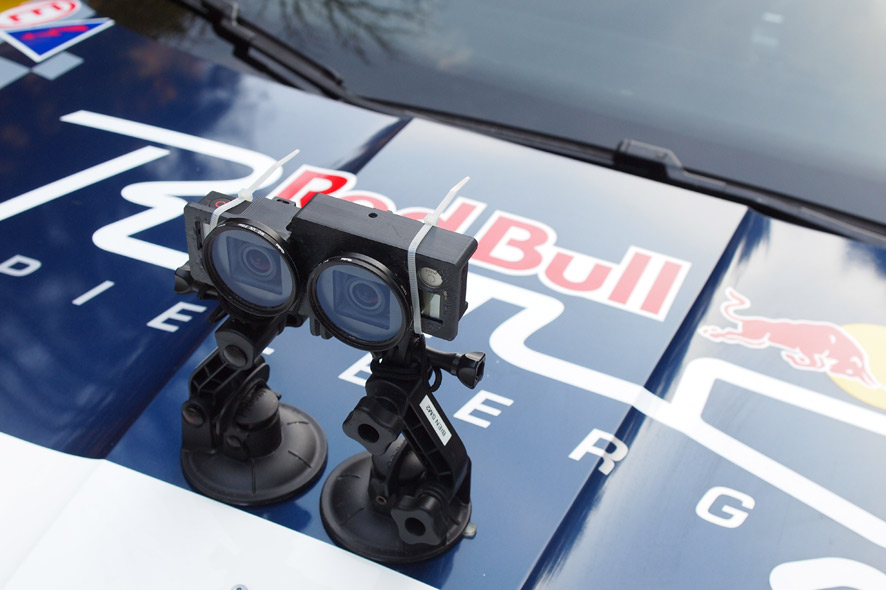

Credit: Ars Electronica / Martin Hieslmair
In the meantime, the GoPros have been repositioned on the ŠKODA and all batteries replaced with freshly charged ones. And the rallye auto too is being made ready for the kilometers to come. “40 left 4 long-long, track, 50 knoll, 80 right 4, left 4 long narrow!, right 4 late, …” The directions given to Raimund Baumschlager for the upcoming stretch of road have been assiduously noted by copilot Thomas Zeltner, since he’s actually the one who issues the meticulously timed instructions on how and when to steer the automobile. During a race, he’s constantly looking up and down, comparing what he has on his pad to what he actually sees out the car’s windows. When a driver’s speed and maneuvering goes completely according to plan, it can mean an advantage of several seconds by the end of a race, according to Thomas Zeltner.

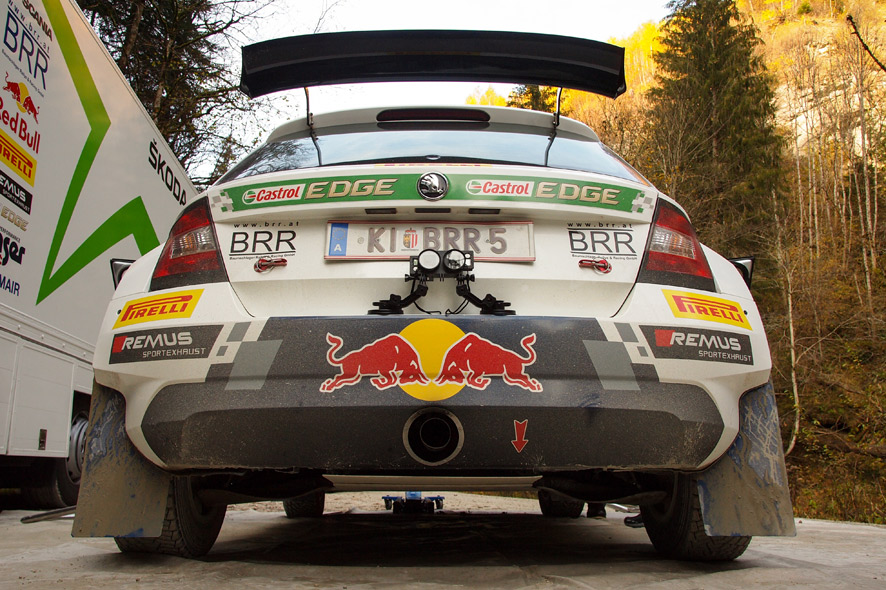
Credit: Ars Electronica / Martin Hieslmair
But let’s start at the beginning—and here as well, there are, technically speaking, numerous possibilities for starting a race. Raimund Baumschlager elaborates: “If you consider what today’s autos can do … for example, with start control technology that lets you preprogram the number of RPMs you take off with so that the tires spin as little as possible. It used to be that you just patched out on the basis of gut feelings.” And also with respect to the interaction of the car and driver: “If a driver had a feeling for technology back then, you could really tune the car yourself. Today, it takes an engineer to take you for a ride, since you have to calculate the weight shift, the car’s balance and so forth. There’s so much that’s been developed in recent years.”

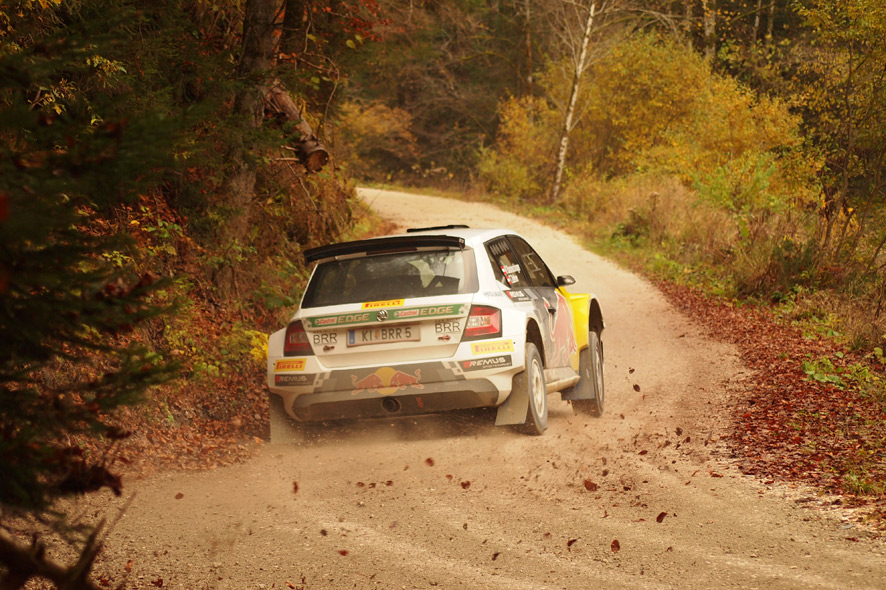
Credit: Ars Electronica / Martin Hieslmair
The film shoot continues. This time, the cameras are set up on the roadside. And you really get a feeling for how incredibly fast the two pilots are speeding down this gravel road when you see that you have only a few seconds to actually observe the car as it races past.


Credit: Ars Electronica / Martin Hieslmair
The days are getting ever shorter, and the diminishing sunlight means this day of shooting is coming to an end. The 3-D cameras are packed up, the film footage safely stowed away, and the participating crews head for home.
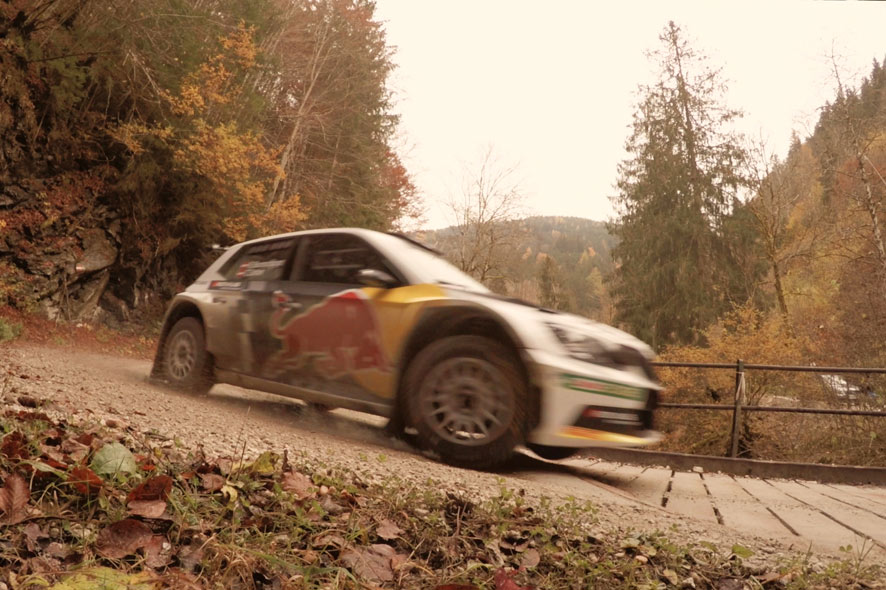

Credit: Ars Electronica Futurelab
Back at the Ars Electronica Futurelab in Linz, it’s time to get busy with the postproduction. Andreas Jalsovec and Michael Mayr are working on a first rough cut of the 3-D film. But before they got started, all the footage from the individual cameras had to be aligned since, for every 3-D shot, two cameras have to film independently of one another. Together with account execs from inspiria event service, they see to it that the finished product is exactly what ŠKODA wants to achieve. Finally, the film is transferred to Deep Space 8K.


Credit: Ars Electronica Futurelab
Wednesday, December 9, 2015, Ars Electronica Center Linz. The dealer conference is in full swing in the Museum of the Future’s event spaces that ŠKODA has booked especially for this occasion. The day’s highlight is the screening of the 3-D video on Deep Space 8K imposing 16×9-meter projection surface.
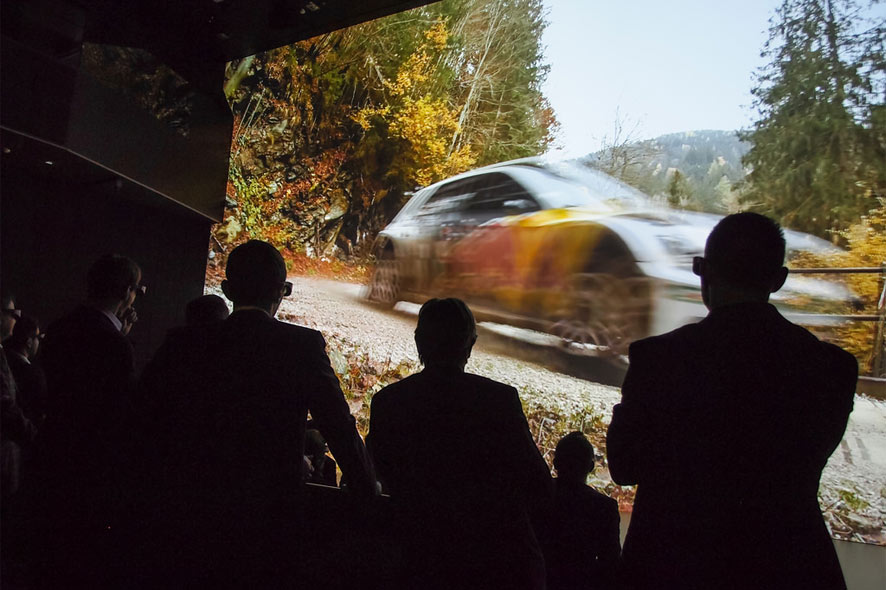
Credit: Ars Electronica / Martin Hieslmair
The idea of commissioning the Ars Electronica Futurelab to produce an action-packed video to be screened in Deep Space 8K in conjunction with the dealers conference emerged from exploratory talks in the Ars Electronica Center, as Stefan Heissel of inspiria event service and ŠKODA marketing director Thomas Diesenberger explained: “Once we were briefed on the possibilities Deep Space 8K offers and we got to view the 3-D video of a death-defying downhill run on Kitzbühel’s world-famous Streif ski slope we realized at once that we had to do something like this with a ŠKODA rallye auto. And we’re absolutely delighted with the results!”
“ŠKODA Rallye 3-D” is now in the lineup at Deep Space 8K and will be screened at presentations in the Ars Electronica Center. If you’d like to view this amazing video, feel free to ask one of the Infotrainers in Deep Space 8K during your next visit.
